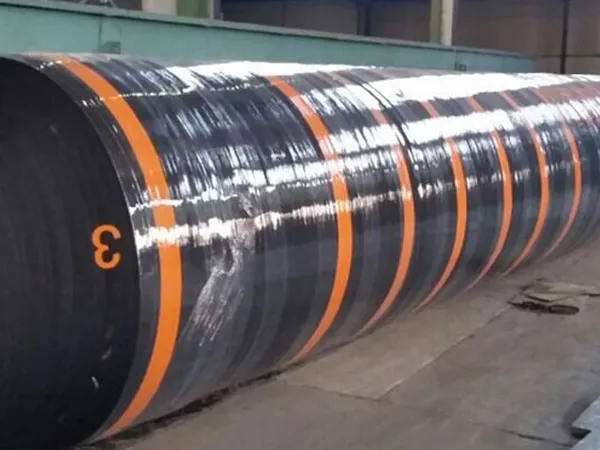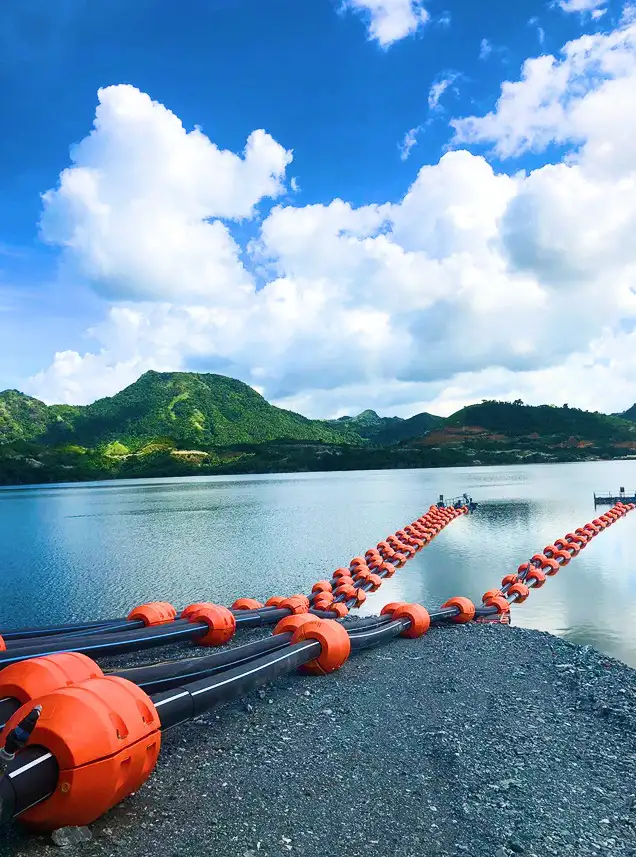
A slurry floating hose is a specialized type of flexible pipeline designed to transport abrasive, high-solid slurries while floating on the surface of water. These hoses are critical components in industries like dredging, mining, and offshore oil and gas operations, where conventional pipelines might be impractical or inefficient.
A slurry floating hose is a specialized, heavy-duty flexible pipe designed to transport abrasive materials (slurry) mixed with water while floating on the water's surface. It serves as a critical, dynamic link in a pipeline, connecting dredging vessels to onshore discharge points or other floating equipment.
Essentially, it is the workhorse of the dredging, mining, and land reclamation industries, providing a flexible and resilient conduit that can withstand harsh marine environments and the punishing wear of abrasive slurries.
Slurry floating hoses are engineered for durability and resistance to harsh conditions. Their construction typically involves multiple layers:
Inner Tube/Liner: This is the most crucial layer, made of highly wear-resistant rubber compounds (such as natural rubber (NR), SBR, or synthetic rubbers) to withstand the abrasive nature of the pumped slurry (e.g., sand, gravel, silt, ore, chemicals). Some specialized hoses may incorporate ceramic linings for even greater abrasion resistance.
Reinforcement Layers: Multiple plies of high-tensile strength synthetic fabrics (like polyester, nylon, or cotton duck) provide structural integrity and pressure resistance. A steel wire helix is often embedded within these layers to prevent kinking and collapse, especially during suction applications.
Floating Layer: This distinctive feature gives the hose its buoyancy. It consists of a microporous, closed-cell foamed material (often PE foam) that does not absorb water, ensuring the hose remains afloat even if the outer cover is damaged.
Outer Cover: Made from robust rubber compounds (such as NR, SBR, or CR), this layer protects the hose from external abrasion, UV radiation, ozone, and weathering. Corrugated designs are common for added flexibility and protection.
End Connections: These hoses are equipped with various fittings, such as flanges, to connect to pumps, other hose sections, or pipelines.
Slurry floating hoses are connected to pumps (like slurry pumps or dredge pumps) that create pressure (for discharge) or a vacuum (for suction) to move the slurry. Their flexible nature allows for dynamic movement and adaptation to varying water conditions and terrain. The integrated floating layer eliminates the need for external floats, simplifying deployment and operation.
Slurry floating hoses are indispensable in a range of demanding applications:
Dredging: This is a primary application, where they are used to transport sediment, sand, gravel, and other debris from the seabed or riverbed to disposal areas or processing facilities. They are widely used with cutter suction dredgers and trailing suction hopper dredgers.
Mining: Essential for transporting high-density abrasive slurries, including mineral concentrates, tailings, and other processed materials, from mining sites to processing plants or storage facilities.
Offshore Oil and Gas: Used for transferring drilling mud, cuttings, and other slurries during offshore drilling and production operations. They can also be used for loading and unloading crude oil and other fluids between tankers and offshore facilities.
Construction and Tunneling: Facilitate the conveyance of slurry mixtures, concrete, and cement in large-scale construction projects.
Waste Management: Handle abrasive waste materials, sludge, and sediment in wastewater treatment and disposal plants.
Agriculture: Used for transferring liquid fertilizers and manure slurry.
Buoyancy: Self-floating design eliminates the need for external floats, reducing installation time and costs.
Flexibility: Can easily adapt to changing water levels and currents, and absorb vibrations from pumps, reducing wear on equipment.
Abrasion Resistance: Designed with specialized inner liners to withstand the highly abrasive nature of slurries, ensuring a longer service life.
Durability: Robust construction with multiple reinforcement layers and a protective outer cover allows them to withstand harsh marine and industrial environments.
Ease of Installation: More flexible and often lighter than rigid steel pipelines, making them easier to maneuver and install.
Visibility: Their presence on the water surface makes them easily visible, aiding in navigation and safety.
In essence, slurry floating hoses provide a reliable, efficient, and flexible solution for transporting abrasive materials over water bodies, contributing significantly to the effectiveness of dredging, mining, and various industrial operations.
